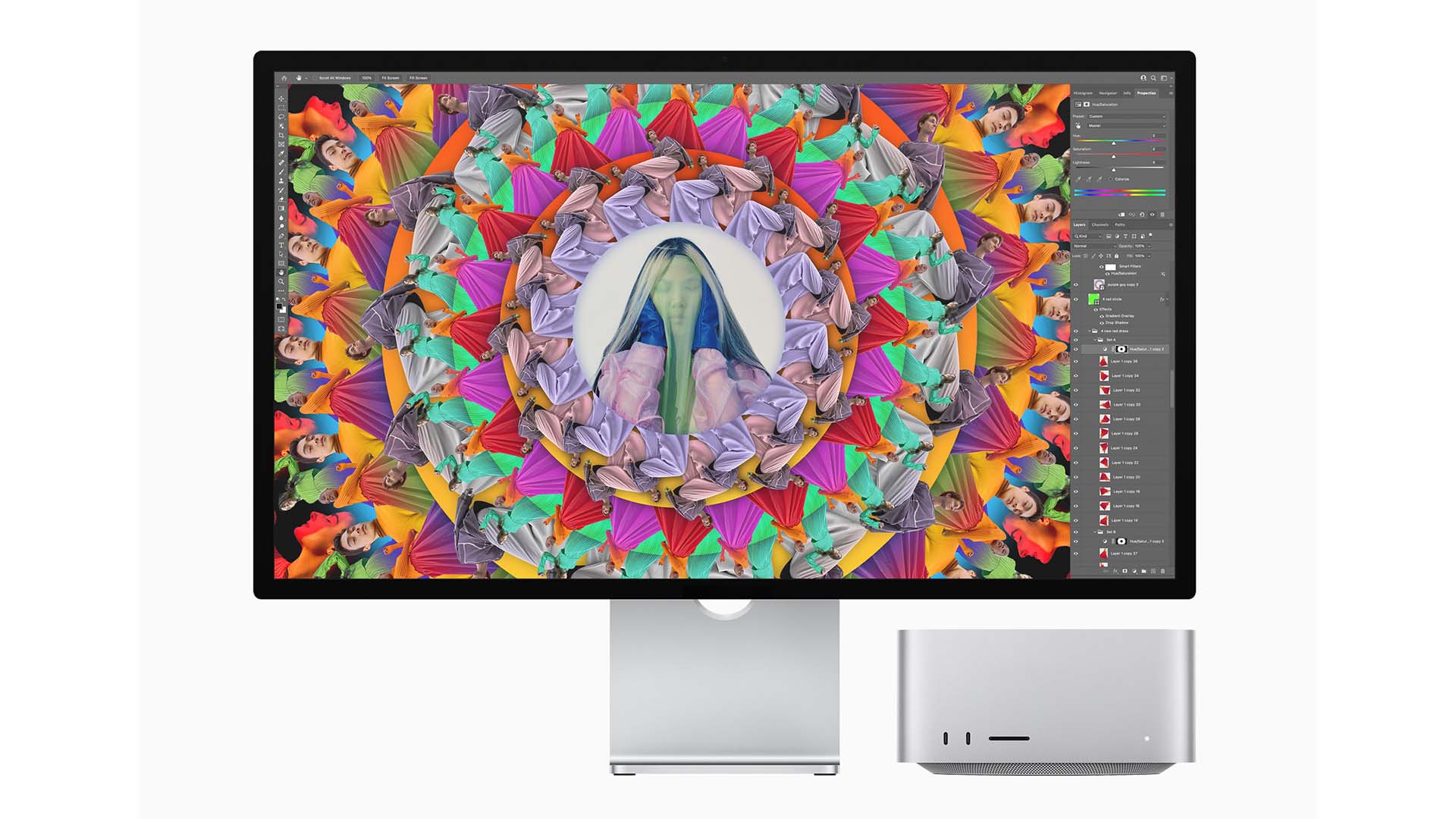
Apple has started 2022 in style, its March 8th ‘Peek Performance’ living up to its billing with a new M1 Ultra chip, an all-new Mac Studio desktop machine, affordable new Studio Display and more. The M1 Ultra / Mac Studio combination promises a phenomenal leap in performance - 80% faster than the most powerful Intel Mac Pro and 3.4x faster than the 27-inch iMac Pro. And yet, M2 and the high-end Mac Pro are still to come…
M1 Ultra
The new apex powerhouse of the Apple Silicon line-up is essentially two M1 Max’s glued together. The glue being a die-to-die connector called UltraFusion with a 2.5TB/sec interposer bandwidth and a doubling of memory channels for a total of 800GB/sec of memory, plus up to 128GB of unified memory. Unlike a traditional PC approach, with a pair of CPUs socketed into a motherboard, the direct connection with tight integration into MacOS means there’s no need to adapt a program to unlock this extra performance. It’s just there. 114 billion transistors, a 20 core CPU with 16-high performance cores, 4 high efficiency cores and a 64-core GPU delivering 21 teraflops and 660 gigatexuals a second. The GPU is 8x faster than that in the original M1. There’s also 32 Neural Engine cores, plus the Media Engine doubled up in the M1 Max is redoubled to support up to 18 streams of 8K ProRes video playback. Apple (believably) claim it’s the only computer in the world able to do this given its hardware acceleration of a codec it created. Sony’s new VENICE 2 digital cinema camera with 8.2K sensor provided the perfect high-end use-case in Apple’s introductory slide.
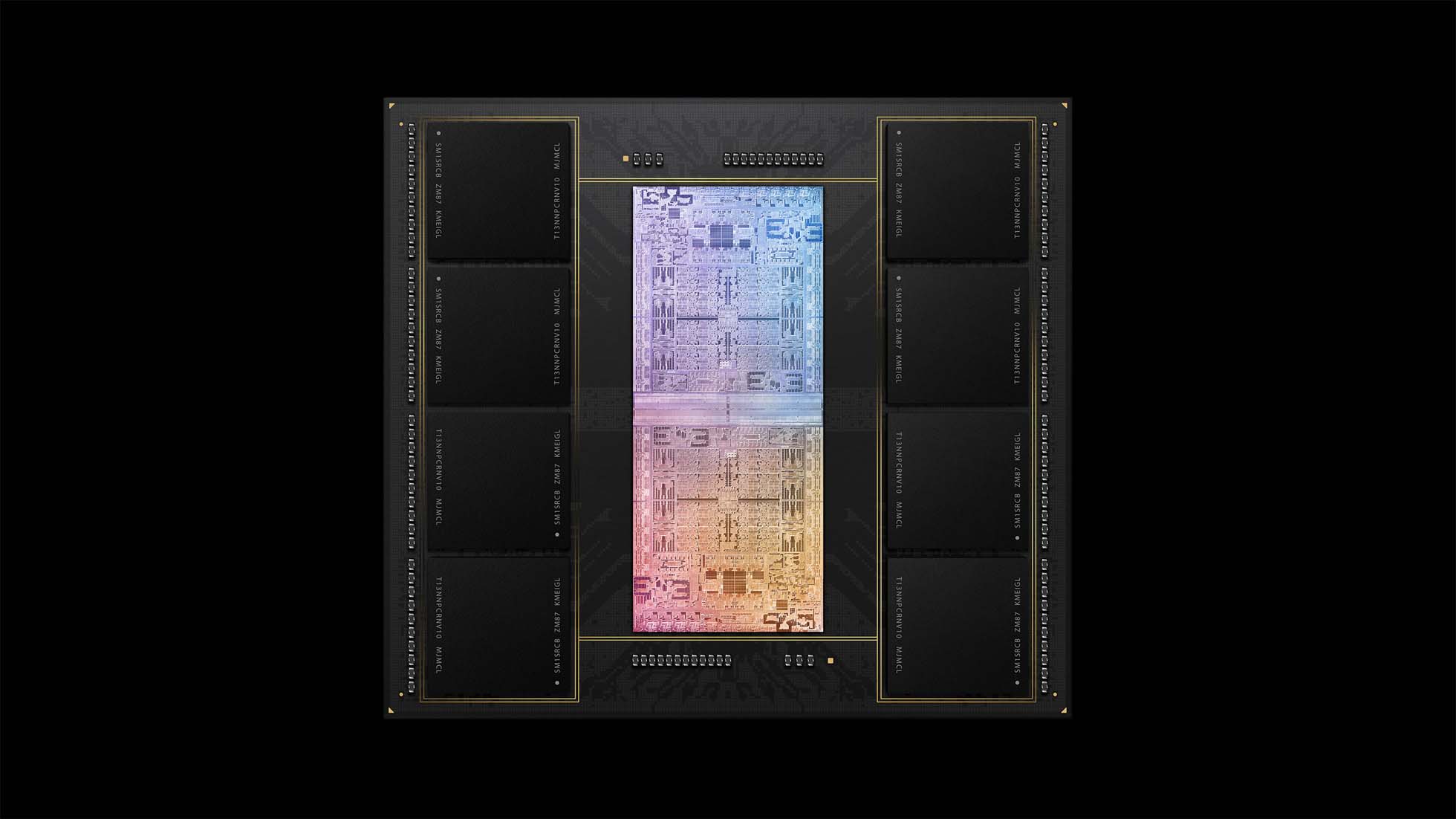
The Apple M1 Ultra. Image: Apple.
Apple’s prowess with integrated chip design has been clear since M1’s debut, but the capability to take on the best of PC discrete graphics chips has been in doubt. The M1 Max offered superiority per Watt performance, but what about desktop class? According to Apple, the new GPU is 80% faster than the highest end GPU - specifically a Core i9-12900K with DDR5 and a GeForce RTX 3090 - currently the fastest video card available with the fastest consumer level Alderlake processor. And M1 Ultra can beat its performance using 200W less power.
If Apple’s performance claims seem unlikely, remember the RTX has 28.3 billion transistors on Samsung’s 8nm process while M1 Ultra has a combined 114 billion using TSMC’s N5 process. Integrating two chips on-die has been a holy grail for chip manufacturers for many years and Apple’s claiming to be the first to achieve it. According to Apple, UltraFusion technology is 4x the bandwidth of any other interconnect technology. If real-world testing matches Apple’s figures, and it ‘just works’ as Apple claims for applications without tweaking, then the new Macs are really leading the entire industry for this class of workstation.
One issue with M1 has been support for external displays - something squarely addressed by M1 Ultra supporting up to four external displays up to 6K at 60Hz, plus an additional 4K display via HDMI.
We already know from the M1 Max MacBooks that stunning performance with native Apple Silicon apps is a practical reality. Creative pro’s using Final Cut Pro, DaVinci Resolve and Adobe Premiere are well served. For non-optimised apps, the trade-offs will be different, there was no attempt to address the gaming market, but creative professionals are going to be mightily tempted.
Mac Studio
The new M1 Ultra chip is being introduced with the all-new Mac Studio but you also have the option of an entry-level model using the M1 Max starting at half the price.
Available to order now, the Mac Studio resembles a blown-up Mac mini - a single aluminium extrusion body with an amped-up double-blower thermal system and a vast array of ports. At the rear there’s 4x Thunderbolt 4 ports, two USB-A ports, HDMI, 10Gb Ethernet and high impedance 3.5mm headphone jack. It’s a shame the latter isn’t on the front of the machine, but that there are ports on the front is welcome enough with two USB-C ports and an SDXC card slot.
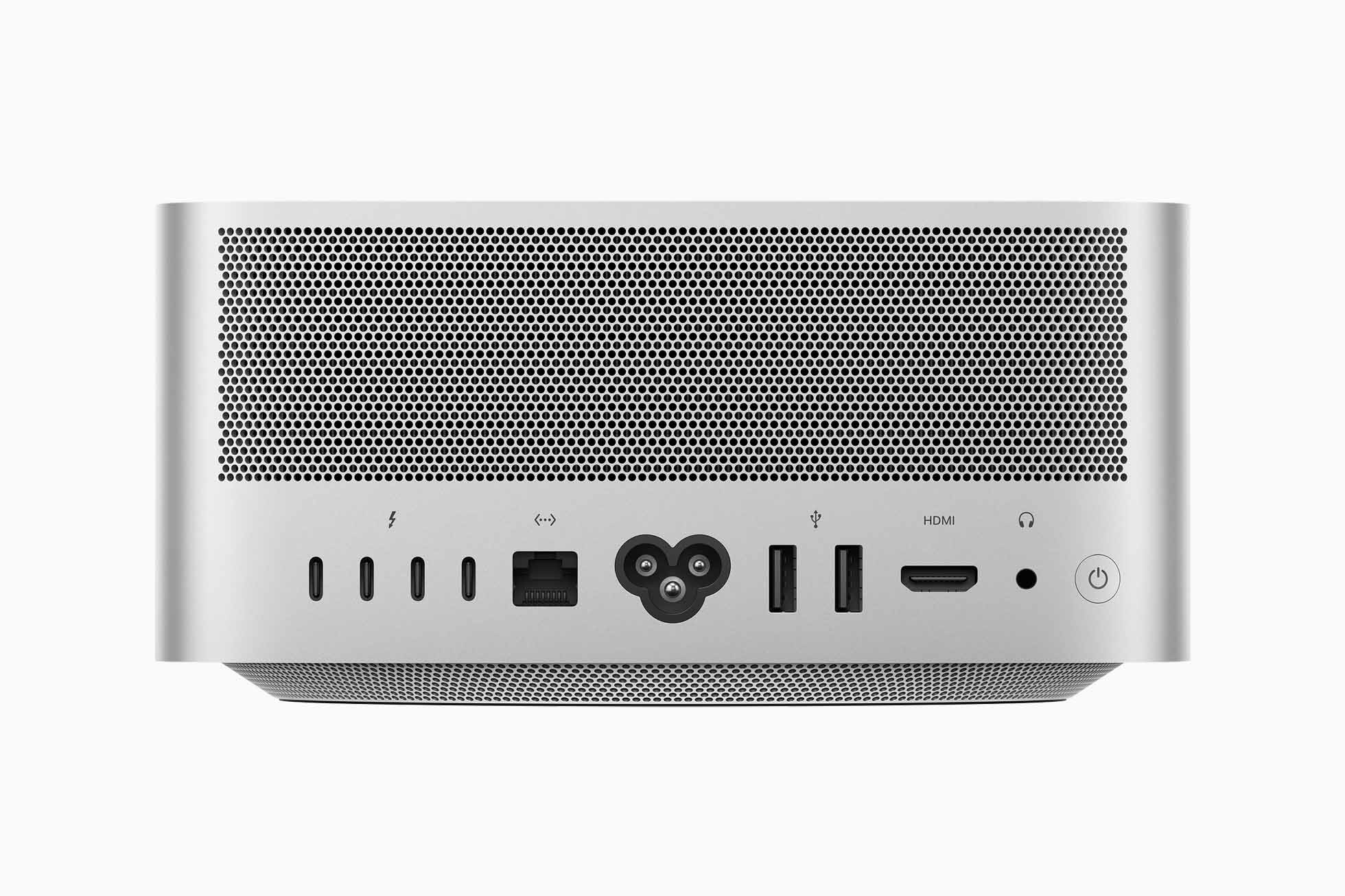
Rear view of the Mac Studio. Image: Apple.
The days of dongle-hell for pro Mac users really seem to be over. The chassis is distinctly Apple, a close cousin of the Mac mini with hot air being expelled through a perforated base, plus 2,000 holes at the rear, to ensure under all but the most demanding workloads it’s barely audible in use.
The entry-level Mac Studio with M1 Max starts at £1,999 for a 10-core CPU, 24-core GPU, 16-core Neural Engine plus 32GB unified memory and 512GB storage. You can select an M1 Max with 32 GPU cores for £200 more, plus increase unified memory and storage - 8TB of storage adds £2,400 to the bill.
The M1 Ultra Mac Studio starts at £3,999 for a 20-core CPU, 48-core GPU and 32-core Neural Engine plus 64GB unified memory and 1TB storage. A 64-core GPU costs £1k extra, while 128GB of unified memory is only possible with the Ultra and costs £800.
The costs stack up rapidly, but Apple didn’t hold back in claiming the most powerful performance levels in its class. Already delivery dates have slipped from March 18 to late April.
Studio Display
Starting at £1,499, this is a 27-inch 5K Retina display with 14.7 million pixels, 600 nits of brightness and a P3 wide colour gamut. Compared to Pro Display XDR starting £4,599 plus £1k stand, it’s a welcome return to the days of more affordable Apple displays. A height adjustable stand version costs an extra £400, admittedly, but the VESA-mount adapter is the same as the standard tilt-adjustable version. There’s also options for anti-glare coatings, plus new silver and black keyboard/mouse and trackpad optional accessories.
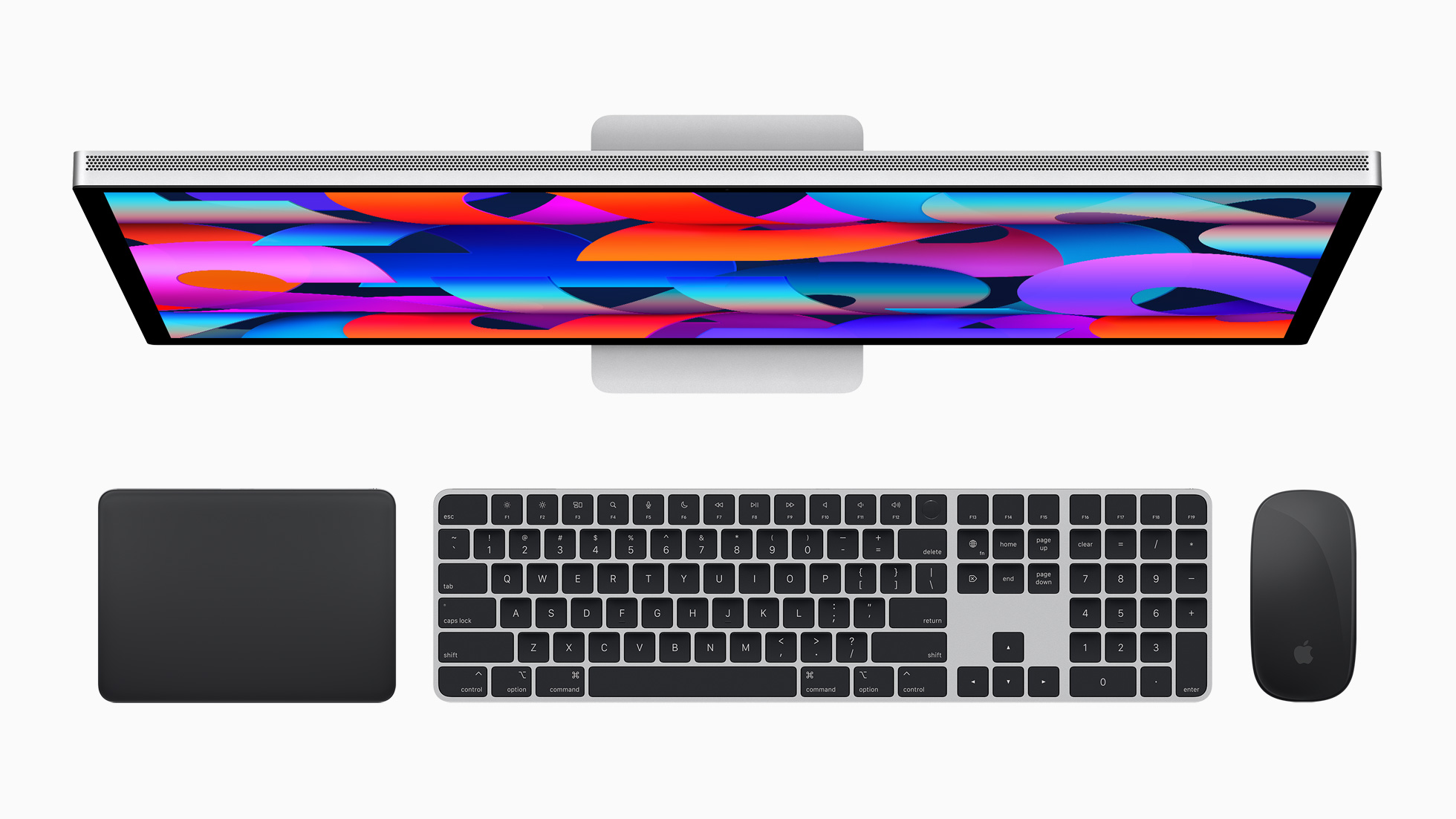
The Apple Studio display. Image: Apple.
The all-screen display with aluminium stand is typically Apple, albeit with no stand-out new design flourishes, but it comes with an integrated A13 chip to drive Apple’s most advanced Mac video system using a 12MP Ultra wide camera with Centre Stage and three studio quality mics. There’s also six speakers with support for Dolby Atmos and Spatial Audio - according to Apple, it’s their best sound system to date. There’s also 3x USB-C ports, plus a Thunderbolt port capable of connecting and powering any recent Mac laptop with 96 watts of power. Like the Mac Studio, it’s available to order today and ships March 18th.
iPad Air
If you thought the M1 was overkill in the 2021 iPad Pro, Apple isn’t listening. The days of iPads getting X-Series updates of last year’s iPhone chip appear to be over. Apple’s mid-range tablet retains the previous chassis design, a 10.9-inch Liquid Retina screen with thin bezels - no FaceID but a TouchID power button on the side - but adds an M1 chip, 12MP camera system supporting CentreStage and 5G as an option.
In day-to-day use, the most profound impact of the M1 in an iPad with iPadOS 15 is the improved multi-tasking support enabled by 8GB of RAM. There are few iPad apps that truly push the latest generation A-Series Bionic chips, but in workflows frequently switching between apps the reduction in RAM-constrained reloads is noticeable. M1 also means a doubling of data transfer rates over USB-C compared to the previous Air.
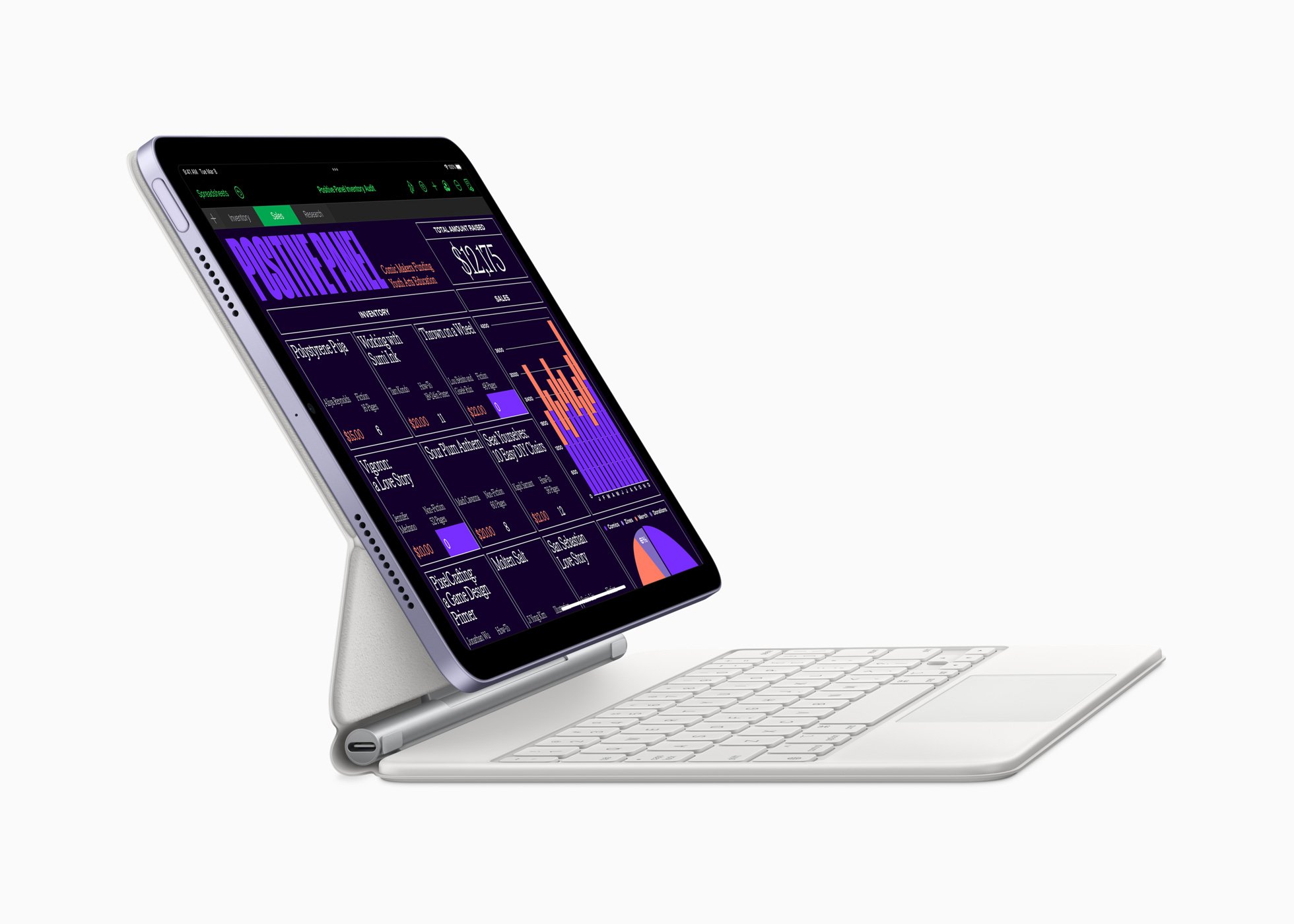
The new M1 powered iPad Air with Magic Keyboard. Image: Apple.
Apple claim the iPad Air is twice as fast as a similar priced Windows laptop, although it’s highly doubtful the comparison factors in the price of a Magic Keyboard and Apple Pencil 2 accessories. The Air is undoubtedly undoubtedly sleeker and lighter, but we’ll be hoping iPadOS 16 advances functionality more than 15 did.
Alongside the iPad Air, Apple revealed a significant update to iMovie coming in April. Magic Movie will automatically create an edit based on your footage, with 20 different styles to choose from for titles, transitions etc. For home movie creators this should be a fun feature, while Storyboards allow for a more manual approach to the same templates. Whether or not we’ll see Apple’s Final Cut Pro NLE make the jump to iPad this year is difficult to predict, but with the Pro and Air models now using M1 it seems believable that eventually it will.
Available to order now, the iPad Air’s pricing starts at £569 for 64GB of RAM, which makes it the cheapest M1 device yet, but 5G adds a £150 premium.
iPhone SE
As expected prior to the event, Apple’s entry-level iPhone SE got an update to bring over some tech from last year’s iPhone 13 with a six-core version of the A15 chip and 5G support. The stellar feature of last year’s iPhones was enhanced battery life, but Apple declined to say just how much of an improvement the new iPhone SE will enjoy. Pricing starts at £419 with 64GB of RAM.
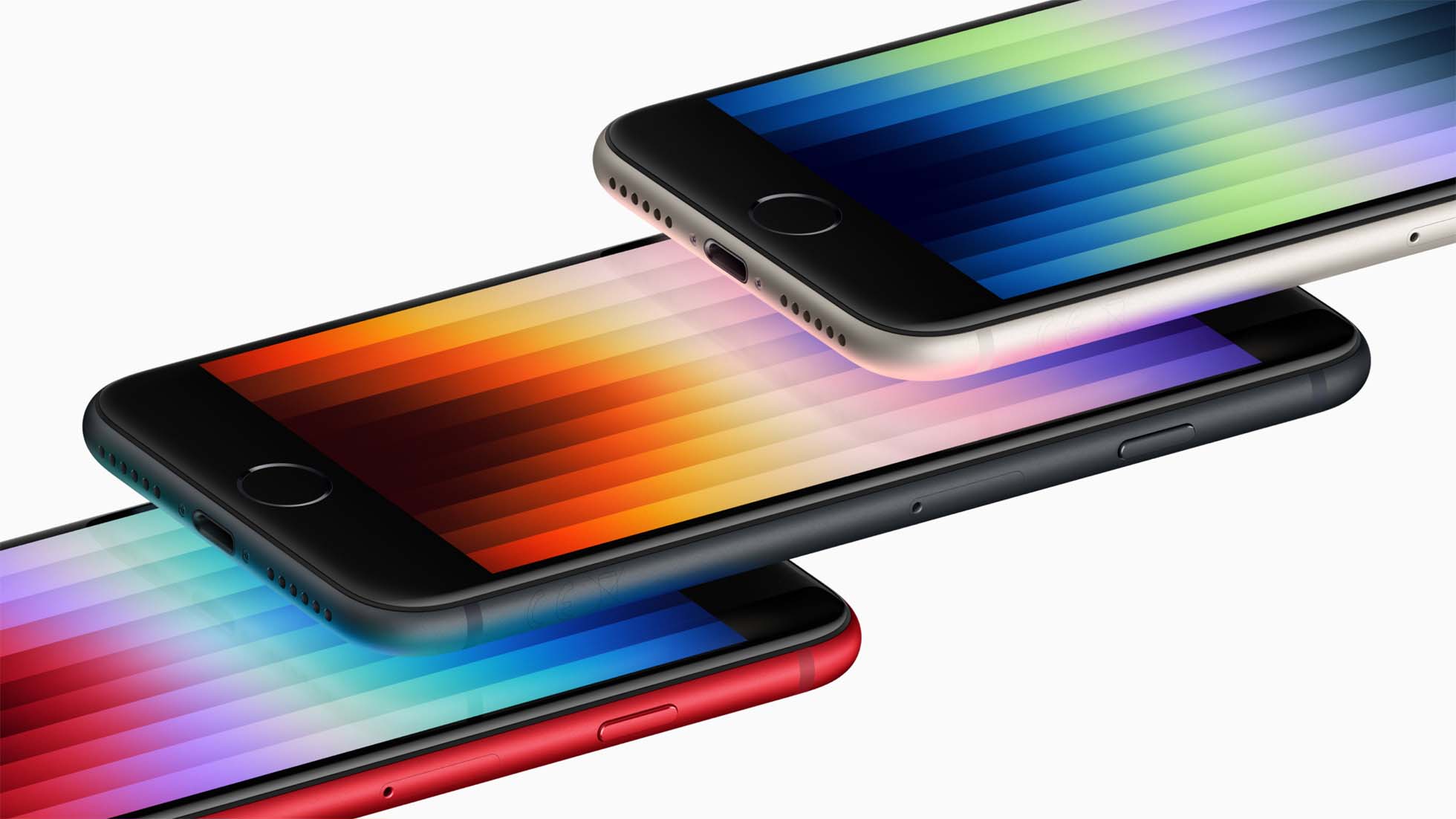
iPhone SE. Image: Apple.
What’s next?
The M1 Ultra is the last of the M1 line, so at least hints the Mac Pro that’s due this year will feature M2. In the interim, Apple have added a mid-range Radeon Pro W6600X MPX module option to the existing Intel Mac Pro, suggesting the new Mac Pro isn’t too imminent.
As well as the Mac Pro and gradual roll-out of M2 across the line, we expect an update of the 13-inch MacBook Pro - which is currently making do with its Intel-era chassis featuring OLED TouchBar and not much else to justify its premium over the M1 MacBook Air. The Mac mini is also in its Intel-era chassis and the i5 Intel Mac mini hasn’t yet been axed, so that seems due a refresh while the iMac 27-inch was quietly discontinued after the event. Whether or not it will be replaced is difficult to predict given the price/performance the decidedly chunky Mac Studio now offers professionals.
Tags: Technology News computing Apple

Comments